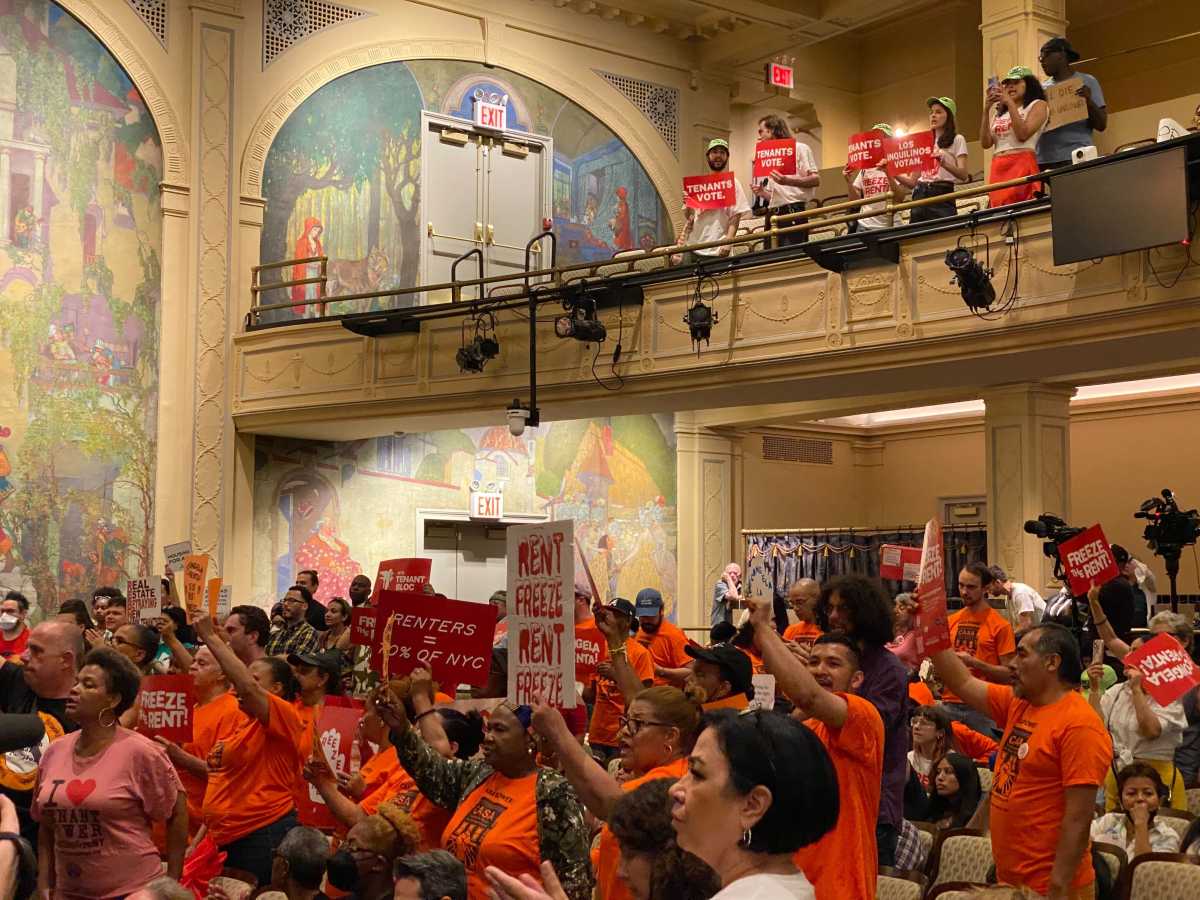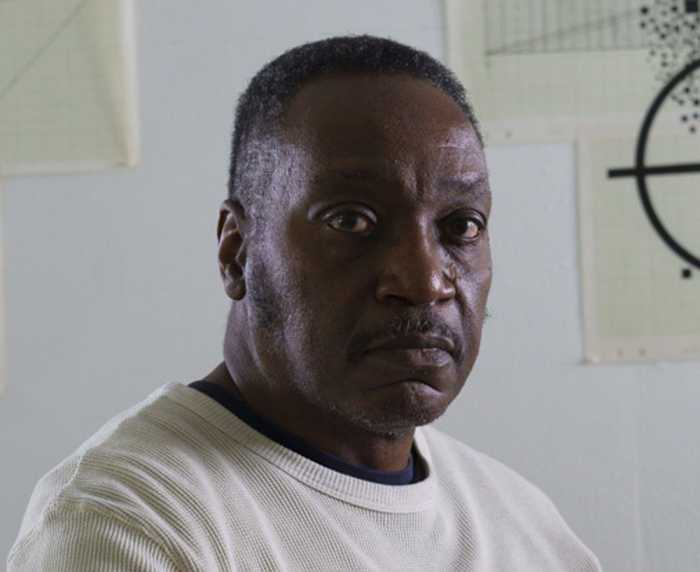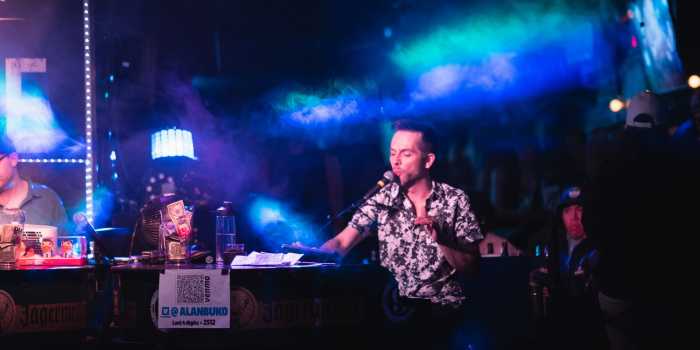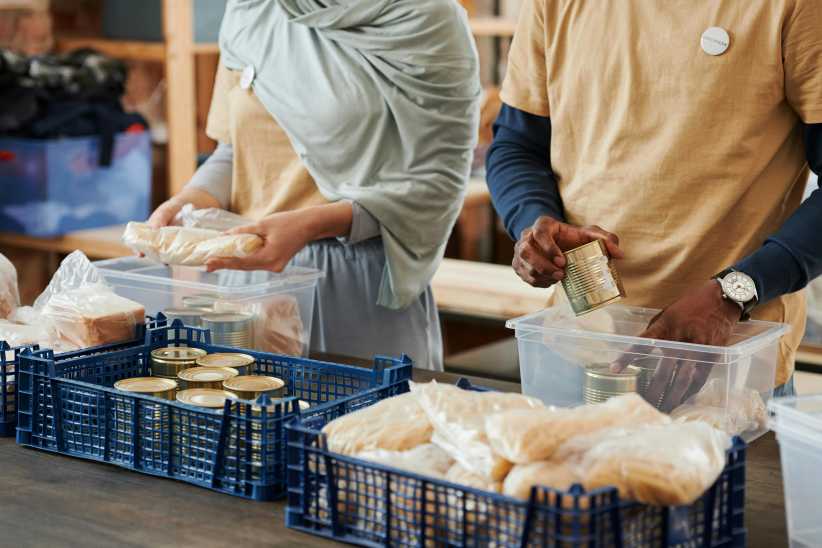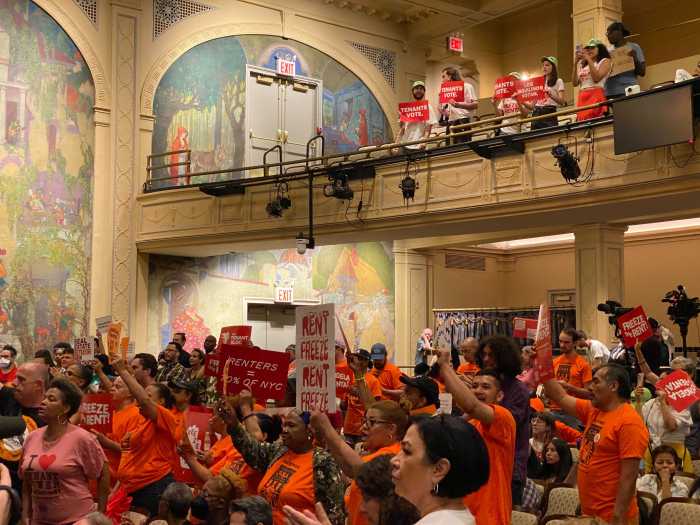Community members had the first public opportunity this week to speak
with planners of a pioneering residential complex that promises to bring
400 units of mixed-income housing to the banks of the Gowanus Canal.
And the developers got an earful.
Members and guests of the Community Board 6 Environmental and Public Safety
committee turned out on Monday, and trudged through the snowstorm to meet
in a steamy conference room above the YMCA on Ninth Street in Park Slope.
It was the Brownfields Cleanup Project application that developers showed
up to discuss, but many attendees were surprised to learn that Leviev
Boymelgreen, the developers who want to build on the site, recently acquired
land at 420 Carroll St., as well, expanding their initial plans for 300
units of housing. What seemed to be of most concern to neighbors is that
material used to fill in a basin at First Street, sometime between the
1950s and today was not part of Leviev Boymelgreen’s request for
remediation to the state Department of Environmental Conservation.
Joining Sara Mirski, Leviev Boymelgreen’s development director for
“Gowanus Village I,” as the developers have dubbed it, were
Thomas McMahon, a consultant for the Israeli-backed development company
whose principal is the local developer Shaya Boymelgreen. Leviev Boymelgreen
purchased the site — bounded by Carroll Street, First Street, Third
Avenue and the Lateral Canal (also known as the First Street Basin) —
last October for $8 million.
Also at the CB6 meeting was Joel Landes, an engineer assisting Leviev
Boymelgreen with their application for abatements through the DEC’s
Brownfields Cleanup Program, which would repay 18-percent of the money
the developers spend on testing and cleaning of contaminants on the site.
The canal, which is beloved by some as a historic channel of Dutch ancestors
worthy of preservation, and seen by others as the utilitarian industrial
and manufacturing district it now is — not to mention highly polluted
after decades of such use — has become a hot site for speculators
since Boymelgreen purchased the three-acre site.
As first reported by
The Brooklyn Papers in November, the purchase was viewed by community
members and investors alike as the first viable harbinger of new residential
activity along the canal, beyond the migration of homesteading artists
to the gritty area in recent years and the stray seal.
But as evidenced by the questions and accusations shot at Mirski, the
canal has yet to truly shed its reputation for being the toxic and stagnant
waste dump whose still, filmy, chemically polluted waters led to the moniker
“Lavender Lake.”
Because Boymelgreen is still in the process of developing a site plan
in conjunction with the Department of City Planning, according to his
application, the project is not yet in the land use review process, so
questions raised about development were answered vaguely by Mirski. The
New York Times reported last month that Boymelgreen has already hired
noted architect Enrique Norten to help design the residential complex.
At the very earliest, Mirski said, buildings could be completed in two
years, but she said it would more likely be three. Affordable housing
would be a component, Mirski said, but she wasn’t sure how much would
be included. Mirski also said the developers hope to use “green development”
methods so the addition of units won’t overburden the existing water
and sewage needs around the canal.
But the persistent question raised had to do with exactly what kind of
contaminants were already on the three acres owned by Boymelgreen, the
newly purchased lot, which is home to the Figliolia Plumbing building,
and that mysterious Lateral Canal.
Many residents felt the information provided on Boymelgreen’s application
to the state DEC wasn’t adequate, and the fear raised by more than
one Gowanus or Carroll Gardens-area resident was that, by not disclosing
what potential contaminants the developers were testing for, residents
would never know exactly what lies below the surface.
Marlene Donnelly, a member of the CB6 committee as well as Friends and
Residents of Greater Gowanus (FROGG) said she was concerned about what
the state brownfields program gave the developers leeway to do.
“This was the first [application] that didn’t identify any contaminants
… to imply contamination based on 19th-century industrial uses when
the property is next to a site that has fill 18 feet above sea level and
we don’t know where it came from, is just …” she trailed
off. “We’ve seen men in white suits scouring that site with
tweezers. The fact that there’s no intention to find out about what’s
in that fill … will it ever go into the brownfield application?”
Landes explained the brevity of the application by saying, “unfortunately
for this site there was very little information available.”
“You can make a good assumption there is contamination,” the
engineer said, noting the likelihood of such contaminants as sulfur and
petroleum
As for the filled canal, Mirski said Leviev Boymelgreen is not in a position
to do anything about it, though it remains a concern, since it is city
property and “we don’t own it.”
But DEC spokeswoman Gabrielle Done said the agency returned Boymelgreen’s
application and requested more supporting information after community
comments raised the concern of unreported but present contaminants.
“Following the preliminary review of the application and the comments
we received, we asked the applicant to provide us with additional information,”
she said, noting that was only part of their efforts to “work with
the applicant to resolve conflicts within the application.”
And while the DEC often responds to complaints issued during the public
comment period of a brownfields application, none is announced or required
to be held in the open.
Landes noted, “It’s a very open process, there are up to seven
different stages of public review.”
Mirski promised, just the same, to file any correspondence between Boymelgreen
and the DEC with CB6, provided the developer’s lawyer cleared it.
Still, some residents urged the developer to start the city’s seven-month
Uniform Land Use Review Procedure (ULURP) right away to bring community
discussion to a head, and look into other issues with the site. That process,
which would be triggered by the needed rezoning of the site from industrial
to residential, requires hearings before and recommendations by the community
board, borough president, City Planning Commission and the City Council.
Mirski said she would consider doing so.
“Clearly the [use of the site and the brownfields application] are
linked,” pointed out Phaedra Thomas, a Red Hook resident who urged
ULURP begin, “because one concludes that the remediation process
changes depending on what you plan to do at the site.”
Donnelly, who advocates for public planning of the Gowanus riverbanks,
agreed.
“There’s a little bit of a disconnect in the joint creation
of parks and private housing,” she said, and hopes not to extinguish
small-scale manufacturing and the “artisan-type development.”
“It should be parks and public entities of other sorts that go together.”


